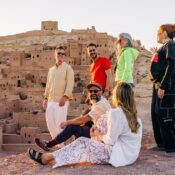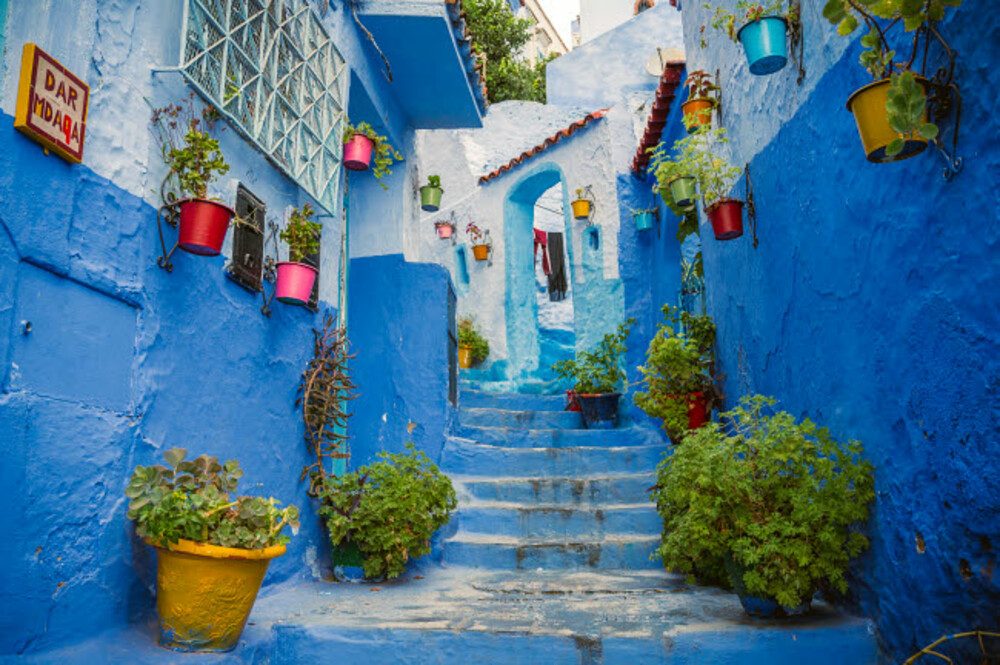
Chefchaouen: Unveiling the blue pearl of Morocco
Nestled in the Rif Mountains of Morocco lies Chefchaouen, a picturesque town renowned for its enchanting blue-washed buildings and winding alleyways. Often referred to as the “Blue Pearl” or “Blue City,” Chefchaouen offers visitors a serene escape from the hustle and bustle of modern life.
Introduction to Chefchaouen
Chefchaouen, nestled in the Rif Mountains of Morocco, was established in 1471, offering a serene escape from bustling city life. The city’s allure lies in its enchanting blue-washed buildings, creating a picturesque backdrop against the rugged mountains. This meditative palette is believed to symbolize spirituality and ward off mosquitoes, enhancing the tranquil ambiance. As visitors wander through its narrow cobblestone streets, they encounter a tapestry of Berber, Arabic, and Andalusian influences, reflected in the architecture, cuisine, and vibrant market stalls. Beyond its aesthetic appeal, Chefchaouen beckons travelers to immerse themselves in its rich cultural tapestry, inviting introspection and exploration amidst its peaceful confines.
The origin of the blue city
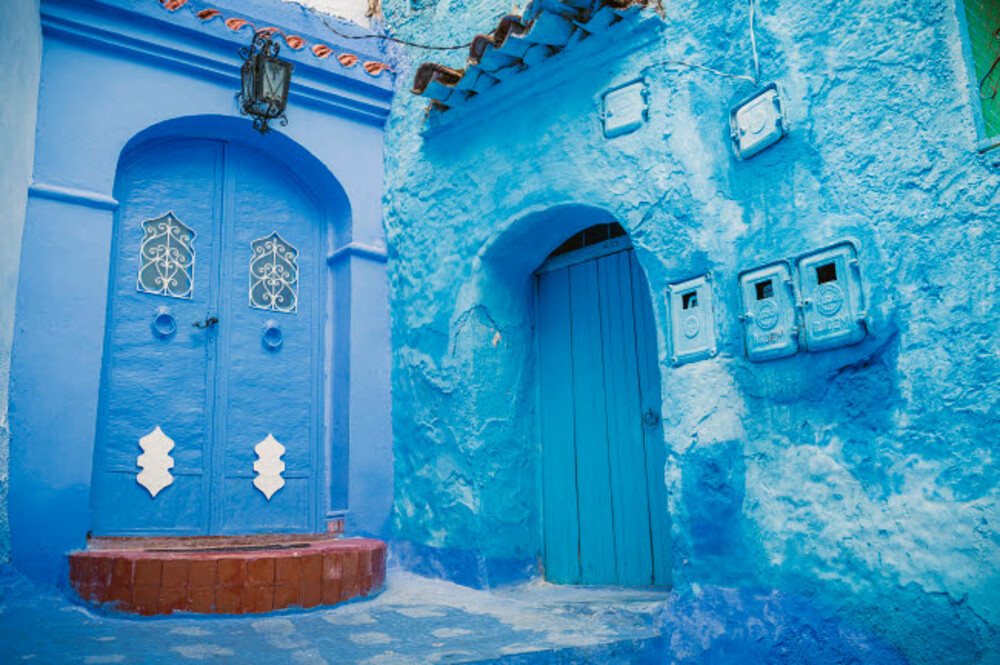
Myth and history
Legend attributes Chefchaouen’s azure hue to Jewish refugees evading the Spanish Inquisition in the 15th century. Another theory suggests the town’s Muslim residents adorned it in blue to repel mosquitoes or symbolize celestial realms. This picturesque Moroccan gem, nestled in the Rif Mountains, boasts narrow alleys and quaint houses drenched in varying shades of blue. Whether rooted in historical escape or practicality, the town’s cobalt facades have become its signature, attracting tourists seeking both respite and enchantment amidst its labyrinthine streets. Regardless of its origins, Chefchaouen stands as a testament to cultural amalgamation, where tales of refuge and symbolism intertwine amidst its azure charm.
Symbolism of the color blue
In Moroccan tradition, the color blue carries profound cultural and spiritual meanings. Particularly in Chefchaouen, the city renowned for its blue-washed walls, this hue is laden with symbolism. The azure facades are believed to embody purity, instill tranquility, and offer protection against malevolent spirits. Each brushstroke of blue not only adorns the architectural canvas but also resonates with centuries-old beliefs, weaving a tapestry of cultural heritage. These cobalt-hued walls stand as a testament to the reverence for tradition and the profound connection between color and spirituality in Moroccan culture, inviting visitors to immerse themselves in a world where every shade carries significance beyond mere pigment.
Exploring the blue Medina
Labyrinthine streets
The Medina of Chefchaouen, nestled in Morocco, is a captivating maze of slender streets and alleys, distinguished by an enchanting array of blue hues that form a spellbinding tapestry. Wandering through its labyrinthine pathways is an integral aspect of the journey, presenting travelers with opportunities to chance upon concealed treasures and secluded courtyards. Every turn reveals a new facet of this picturesque enclave, where the azure shades evoke a sense of tranquility and mystique. Exploring the Medina offers a glimpse into the rich cultural tapestry of the region, inviting visitors to immerse themselves in its timeless charm and discover the allure of its hidden corners.
Instagram-worthy spots
Chefchaouen, nestled in Morocco’s Rif Mountains, enchants with its cobalt-hued doorways and lively market squares, creating a haven for photographers and social media enthusiasts. Its azure alleys and vibrant nooks beckon exploration, promising picturesque moments at every turn. Each corner unveils a new facet of the town’s allure, inviting visitors to capture its timeless charm. From the maze-like streets to the tranquil courtyards, Chefchaouen’s aesthetic appeal is unmatched. It’s a canvas of cultural richness and architectural brilliance, where every snapshot encapsulates the essence of this idyllic Moroccan gem, ensuring an unforgettable experience for shutterbugs and Instagrammers alike.
Cultural experience in Chefchaouen
Local cuisine and specialties
Nestled in the Rif Mountains of Morocco, Chefchaouen captivates visitors not only with its stunning blue-washed streets but also with its delectable cuisine, a fusion of Moroccan and Andalusian flavors. The city’s culinary scene boasts an array of tantalizing dishes, among which the fragrant tagine and fluffy couscous reign supreme. However, it’s the region’s renowned goat cheese that steals the spotlight, its creamy texture and distinctive taste leaving a lasting impression on discerning palates. Exploring Chefchaouen isn’t just a visual feast; it’s a gastronomic adventure, inviting travelers to savor the rich tapestry of flavors that reflect the cultural heritage of this enchanting Moroccan gem.
Artisan crafts
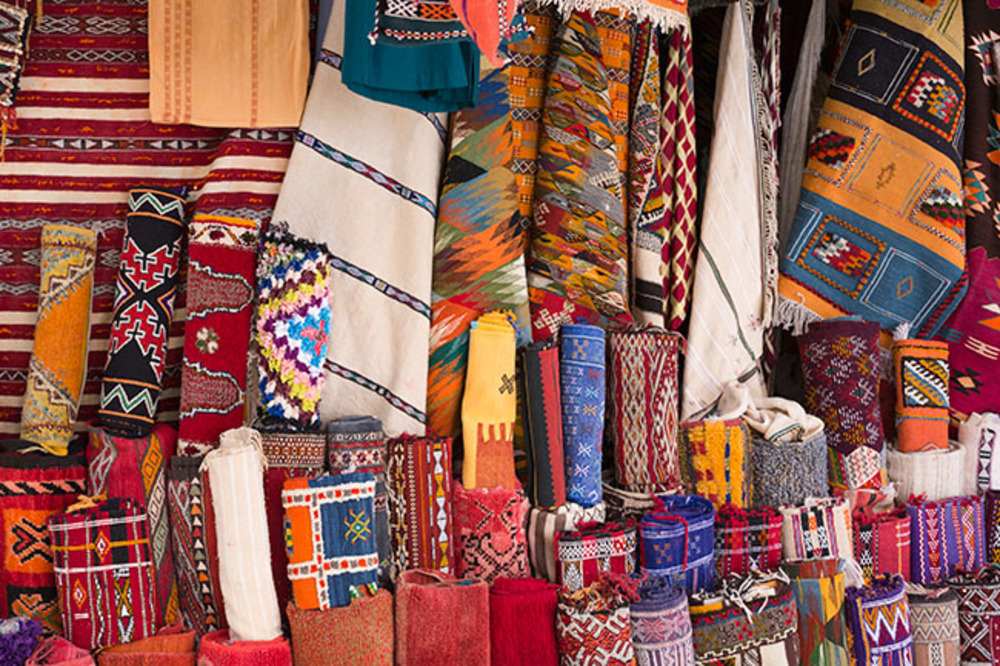
Nestled within the town lies a vibrant artisan community, boasting skilled craftsmen dedicated to preserving Morocco’s traditional handicrafts. These artisans excel in crafting pottery, intricate weaving, and exquisite woodworking, showcasing the rich cultural heritage of the region. Exploring the bustling local markets and quaint shops offers visitors a delightful experience, where they can immerse themselves in the authentic charm of Moroccan craftsmanship. From beautifully glazed ceramics to finely woven textiles and meticulously carved wooden treasures, there’s a plethora of unique souvenirs and gifts awaiting discovery, each telling a story of skill, tradition, and artistry.
Traditional rituals and festivals
In Chefchaouen, a town pulsating with cultural richness, a tapestry of traditional rituals and festivals unfurls year-round. These vibrant events, ranging from religious ceremonies to rhythmic music and captivating dance performances, offer a captivating glimpse into the soul of the local community. Each celebration serves as a testament to Chefchaouen’s deep-rooted heritage, inviting visitors to immerse themselves in its cultural tapestry. Whether witnessing sacred rituals or joining in the joyous melodies of local music, every experience in Chefchaouen promises to be an unforgettable exploration of tradition and community spirit.
Tips for traveling to Chefchaouen
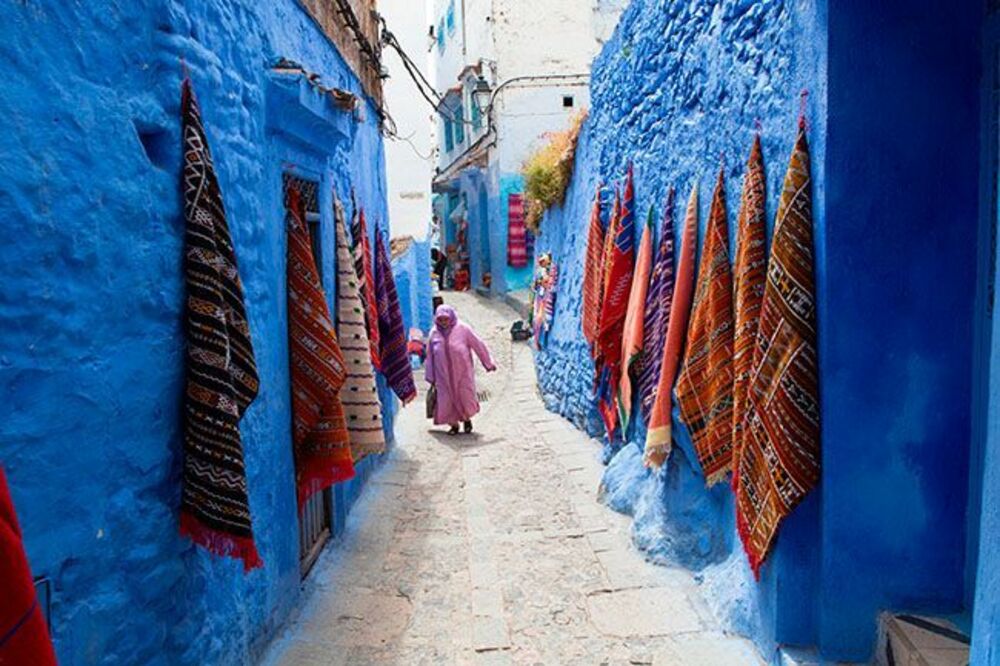
Best Time to Visit
The best time to visit Chefchaouen is during the spring (March to May) and fall (September to November) when the weather is mild, and the town is less crowded. Avoid visiting during the scorching summer months, when temperatures can soar, and the streets can be crowded with tourists.
Getting around
Nestled in the Rif Mountains of Morocco, Chefchaouen boasts cobblestone streets and vibrant blue-hued buildings, creating a picturesque scene perfect for leisurely strolls. Its compact size allows visitors to navigate effortlessly on foot, discovering hidden gems like local markets and quaint cafes. For more extensive excursions, taxis are readily accessible, offering convenient transportation to nearby attractions and rural landscapes. Whether wandering the labyrinthine alleys or embarking on countryside adventures, Chefchaouen’s charm and accessibility cater to both casual wanderers and avid explorers alike, promising an unforgettable Moroccan experience.
Etiquette and cultural norms
When exploring Chefchaouen, adherence to local customs is crucial. Modest attire is highly encouraged, particularly at religious sites. Prior to photographing local residents, seek their permission as a sign of respect for their privacy and cultural norms. This demonstrates appreciation for the community’s traditions and fosters positive interactions with residents. By embracing these practices, visitors contribute to a harmonious and culturally sensitive experience in Chefchaouen.
Conclusion
Chefchaouen, with its blue-washed buildings and rich cultural heritage, offers visitors a unique glimpse into the heart and soul of Morocco. Whether exploring the labyrinthine streets of the Medina, sampling local cuisine, or immersing oneself in traditional rituals and festivals, a trip to Chefchaouen promises an unforgettable experience filled with beauty, history, and charm.
FAQs
- Is Chefchaouen safe for solo travelers?
- Yes, Chefchaouen is generally safe for solo travelers. However, it’s always a good idea to exercise caution and be aware of your surroundings, especially at night.
- What are some must-visit attractions in Chefchaouen?
- Some must-visit attractions in Chefchaouen include the Kasbah Museum, the Grand Mosque, and the Ras El Ma waterfall.
- Can I hike in the Rif Mountains around Chefchaouen?
- Yes, there are several hiking trails in the Rif Mountains that offer stunning views of the surrounding countryside. Be sure to pack sturdy footwear and plenty of water.
- Is it easy to find accommodations in Chefchaouen?
- Yes, there are plenty of accommodations available in Chefchaouen, ranging from budget-friendly guesthouses to luxury riads. It’s advisable to book in advance, especially during the peak tourist season.
- Are there any restrictions on photography in Chefchaouen?
- While photography is generally permitted in Chefchaouen, it’s essential to respect the privacy of local residents and ask permission before taking their picture.

